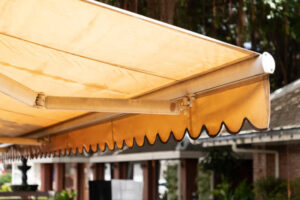Roofing is an essential part of any construction project, but it can also be a hazardous task that exposes workers to various risks. As a responsible contractor or project manager, it’s crucial to prioritize the safety of your crew members. By implementing effective safety measures, you can significantly reduce the likelihood of accidents and injuries.
you can get roofing services
In this article, we will discuss fifteen important safety measures that should be followed when working on roofs.
Introduction: The Importance of Roofing Safety
Roofing projects involve working at heights and handling heavy materials, making safety a critical concern. Implementing effective safety measures not only protects workers but also ensures project efficiency and productivity. By investing in the well-being of your crew, you create a positive work environment and mitigate potential liabilities.
Conducting a Safety Assessment
Before starting any roofing project, it’s important to conduct a thorough safety assessment. This assessment should identify potential hazards and risks specific to the project site. By understanding the potential dangers, you can develop strategies to eliminate or minimize them.
Providing Proper Training
One of the most crucial steps in ensuring roofing safety is providing comprehensive training to your crew members. Proper training should cover topics such as fall protection, hazard identification, proper tool usage, and emergency procedures. Ongoing training sessions and refresher courses are also essential to keep your team up to date with the latest safety practices.
Ensuring the Use of Personal Protective Equipment (PPE)
Personal Protective Equipment (PPE) plays a vital role in safeguarding workers from potential hazards. It includes items such as hard hats, safety glasses, gloves, and high-visibility vests. Ensure that your crew members are equipped with the necessary PPE and emphasize its consistent use throughout the project.
Securing the Work Area
Creating a secure work area is essential for roofing safety. Erecting safety barriers and signage helps prevent unauthorized access and alerts individuals to potential hazards. Keep the work area clean and organized, removing any debris or tripping hazards promptly.
Implementing Fall Protection Systems
Falls are a leading cause of injuries in roofing projects. Implementing fall protection systems, such as guardrails, safety nets, and personal fall arrest systems, is crucial to prevent accidents. Conduct regular inspections to ensure that these systems are properly installed and maintained.
Using Ladders Safely
Ladders are commonly used in roofing projects, but they can pose significant risks if not used correctly. Train your crew members on ladder safety, emphasizing proper ladder selection, secure placement, and three-point contact while climbing. Regularly inspect ladders for any damage or defects.
Minimizing Exposure to Hazardous Materials
Roofing materials may contain hazardous substances such as asbestos or lead. It’s essential to identify and manage these materials properly. Follow applicable regulations and guidelines for handling and disposal. Provide your crew with appropriate training and protective measures to minimize exposure.
Weather Considerations
Weather conditions can greatly affect roofing safety. Monitor weather forecasts and avoid working on roofs during adverse weather conditions such as strong winds, heavy rain, or icy surfaces. Incorporate weather contingency plans into your project schedule to ensure the safety of your crew.
Proper Handling of Tools and Equipment
Improper use of tools and equipment can lead to accidents and injuries. Train your crew on the correct handling and maintenance of all tools and machinery used in roofing projects. Regularly inspect equipment to identify any defects or malfunctions that could pose a safety risk.
Electrical Safety Precautions
Roofing projects often involve working near electrical systems. Ensure that your crew members are trained on electrical safety protocols and know how to identify and avoid potential electrical hazards. Use proper insulation and grounding techniques when working around electrical equipment.
Maintaining Good Communication
Effective communication is essential for maintaining a safe work environment. Encourage open lines of communication between crew members and supervisors. Ensure that everyone understands their roles and responsibilities regarding safety procedures. Establish a reporting system for potential hazards or near-miss incidents.
Regular Inspections and Maintenance
Regular inspections and maintenance are crucial for identifying potential safety hazards and addressing them promptly. Implement a schedule for inspecting roofs, equipment, and safety systems. Document and address any identified issues to ensure the ongoing safety of your crew.
Emergency Preparedness
Despite all precautionary measures, accidents can still occur. It’s vital to have an emergency response plan in place. Train your crew members on emergency procedures, including first aid and evacuation protocols. Maintain well-stocked first aid kits and ensure that emergency contact information is readily available.
Promoting a Safety Culture
Creating a strong safety culture is key to maintaining a safe work environment. Foster a culture where safety is a top priority and everyone feels comfortable reporting potential hazards or safety concerns. Recognize and reward individuals and teams that prioritize safety.
Conclusion
Implementing effective safety measures is crucial for protecting your crew during roofing projects. By conducting safety assessments, providing proper training, ensuring the use of PPE, and implementing fall protection systems, you can significantly reduce the risk of accidents and injuries. Remember to prioritize regular inspections, emergency preparedness, and fostering a strong safety culture. By doing so, you create a safer working environment and set the foundation for successful roofing projects.
FAQs
Q: What is the importance of roofing safety?
A: Roofing safety is crucial to protect workers from accidents and injuries and ensure project efficiency.
Q: What is Personal Protective Equipment (PPE)?
A: PPE includes items such as hard hats, safety glasses, gloves, and high-visibility vests to safeguard workers.
Q: How can I secure the work area during roofing projects?
A: Erect safety barriers, use signage, and maintain a clean and organized work area to enhance safety.
Q: What are some common fall protection systems for roofing?
A: Guardrails, safety nets, and personal fall arrest systems are commonly used fall protection measures.
Q: How can I promote a safety culture in roofing projects?
A: Foster open communication, provide ongoing training, and recognize individuals and teams that prioritize safety.






